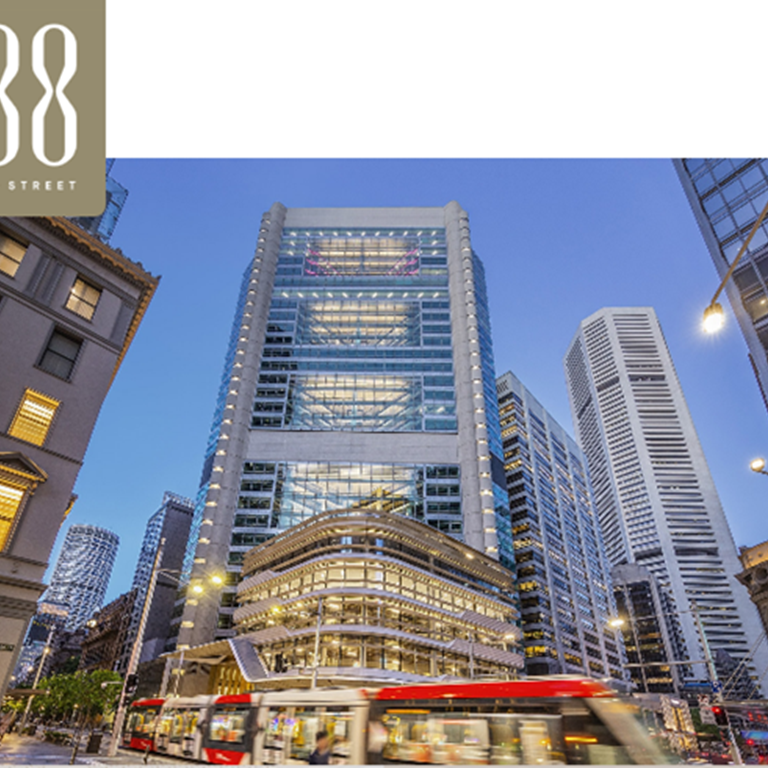The focus for this year’s CIBSE ANZ Young Engineers’ Awards is ‘embodied carbon’. In celebration of this topic CIBSE YEN hosted a site visit to 388 George Street, Sydney last month.
A bit about the building…
388 George Street is an iconic 1970s building that has undergone a transformational refurbishment to now include 28 floors of A-Grade commercial space, 2 floors of basement parking levels and a 5-floor iconic retail pavilion.
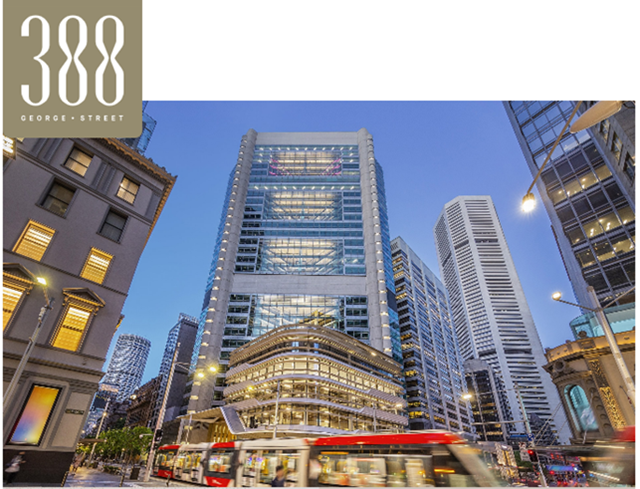
Site Visit walk-through
Eric Serret (Electrical Engineer) and Tim Boorman (Mechanical Engineer) from Arup were part of the design team that was the brains behind this magnificent transformation. They were also our kind guides for the night alongside the facilities management team at 388 George Street.
The building consists of five ‘four-level atria’ that span across the building and is visible from the outside. We started the site visit in one of these atria, which oversaw the city through a façade that had been retained through the refurbishment. Extensive thermal comfort modelling was done to ensure that any cold down-draughts from the tall glazing is mitigated. Since the existing façade was only single-glazed, PV was provided on the top of the building to offset any additional energy required to condition the spaces. This approach was part of achieving the NABERS energy 4.5 star rating.
From the atrium, we headed to the most interesting part of a building for engineers - the plant space. It was highlighted that the retention of the structure brought about several challenges for building services including, limited ability for penetrations in the existing structure and coordination of new services with existing services.
To get around the challenges posed by reticulation within an existing structure, a full 3D scanning was done of the existing structures and services. A decision was then made to assess the reuse of the existing main mechanical ductwork (shown in blue in the picture) as well as the piping throughout the building (shown in green in the picture). The assessment concluded the need for the removal of asbestos and rectifying insulation non-compliances.
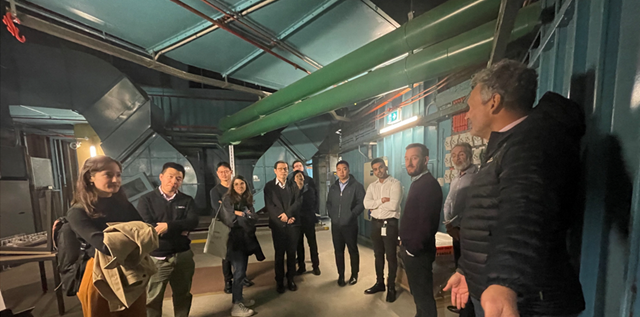
After exploring the plant space, we headed down to the lobby area. This was one of the few spaces within the building that had cut into the existing structure. A triple-floor height lobby space was beautifully illuminated using specialist lighting and services hidden behind an artistic ceiling plan.
It was intriguing to see sprinklers in unusual spaces such as on the columns, just above the spotlights shown in the picture. This was due to the ceiling having protrusions coming down, a typical sprinkler coverage in a grid form on the ceiling was insufficient. This was a typical example of a common theme that was starting to pop up throughout the site visit. To achieve the artistic intent or to retain existing services, where a standard design fails, the design team assessed ways of achieving the same intent as a standard design in what can only be considered unusual ways.
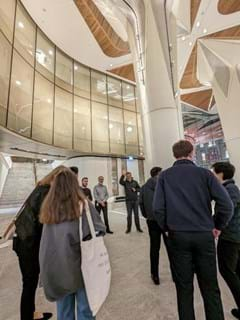
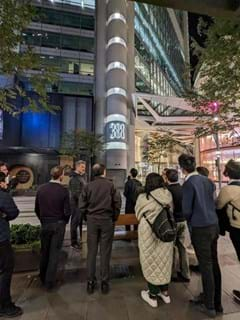
From the lobby, we proceeded outside, where we were shown the pavilion building as well as the first-floor substation.
In a perhaps surprising move, the design team decided to retain the existing substation. In convincing the Utility to retain the substation, several studies on Wind Study CFD, extensive maximum demand calculations and alternative fire engineering solutions to appease the doubts in the mind of the utility, the client as well as the design team themselves.
The visit ended with a photo in commemoration of the event.

Thanks to all those who joined CIBSE YEN during the visit and to those who are hoping to put in a submission for the YEA award, it is our hope this building would be a source of inspiration.
Find out more about the 2023 CIBSE ANZ Young Engineers Awards here
To get the latest news and events, join CIBSE's Young Engineers Network here
